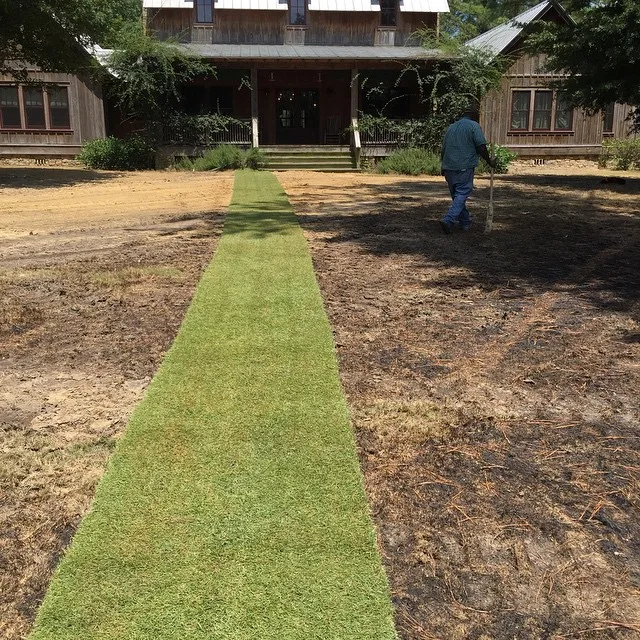All About Aristida Purpurea: A Q&A with Ferb Vu
Hi everyone, Ferb Vu here! Today, we’re diving into the world of a fascinating native North American grass – Aristida Purpurea, also known as the Purple Three-awn.
This resilient plant might seem unassuming at first glance, but it packs a surprising punch in terms of ecological value and adaptation. Let’s answer some of the most common questions about Aristida Purpurea.
What is Aristida Purpurea?
Aristida Purpurea is a bunchgrass, meaning it grows in clumps rather than spreading outwards. It’s known for its distinctive seed heads, which inspired the common name “Three-awn.” These seed heads boast three sharp awns, each capable of exceeding four inches in length.
The grass itself is relatively short, with leaves reaching up to 6.5 inches. Its color can vary between green and purple, depending on the season and growing conditions.
Where Does Aristida Purpurea Grow?
A true survivor, Aristida Purpurea thrives in dry, open areas. Its range stretches across the western two-thirds of the United States, reaching into southern Canada and parts of northern Mexico. You’ll find it most commonly on plains and prairies, where it can withstand harsh weather conditions.
How Does Aristida Purpurea Adapt to its Environment?
The Purple Three-awn is a master of adaptation. Its narrow, rolled leaves minimize water loss in hot, arid environments. The extensive root system allows it to tap into deep moisture reserves during droughts.
But the real stars of the show are the awns. These sharp appendages not only help the seeds disperse by clinging to animal’s fur, but they also play a role in water collection. Morning dew condenses on the awns, trickling down to the base of the plant, providing a vital source of moisture.
What is the Ecological Role of Aristida Purpurea?
Despite its seemingly insignificant stature, Aristida Purpurea plays a crucial role in its ecosystem. It helps prevent soil erosion by anchoring the ground with its deep roots. It also provides valuable cover for small mammals and reptiles in sparsely vegetated areas.
Beyond that, the Purple Three-awn attracts a variety of pollinators, including native bees that nest in its root structure. This contributes to the overall health and diversity of the ecosystem.
Is Aristida Purpurea a Good Landscaping Plant?
While not as flashy as some ornamental grasses, Aristida Purpurea can hold its own in a native plant garden. Its unique seed heads add a touch of texture and visual interest, particularly when backlit by the sun.
However, it’s important to remember that this is a wildflower, not a domesticated variety. It requires minimal maintenance but thrives in dry, well-drained soils. It might not be the best choice for a lush, manicured lawn.
Can I Confuse Aristida Purpurea with Other Plants?
Several other grass species share similar characteristics with Aristida Purpurea. Here’s a quick comparison:
- Needlegrass (Stipa spp.): Both have sharp awns, but Needlegrass tends to be taller and has a more open panicle (flower cluster).
- Bottlebrush Grass (Hystrix patula): Similar seed heads with barbed awns, but Bottlebrush Grass has wider leaves and a bushier growth habit.
- Three-awn Wheatgrass (Aristida fendleriana): Close relative with similar awns, but Three-awn Wheatgrass has a more sprawling growth pattern.
If you’re unsure about a specific plant, consulting a field guide or botanist can help with identification.
How Can I Learn More About Aristida Purpurea?
There are many resources available to learn more about Aristida Purpurea. Here are a few suggestions:
- Native Plant Societies: Many regions have local Native Plant Societies that offer information on local flora, including Aristida Purpurea.
- Online Resources: The USDA Plants Database (https://plants.usda.gov/) and reputable native plant websites offer detailed information on the Purple Three-awn.
- Field Guides: A good field guide to grasses and wildflowers in your region can be an invaluable tool for identification.
Conclusion
Aristida Purpurea, the Purple Three-awn, might be a small grass, but it’s a vital part of healthy ecosystems. By understanding its unique features and ecological importance, we can appreciate this resilient native plant even more.
If i die, water my plants!



